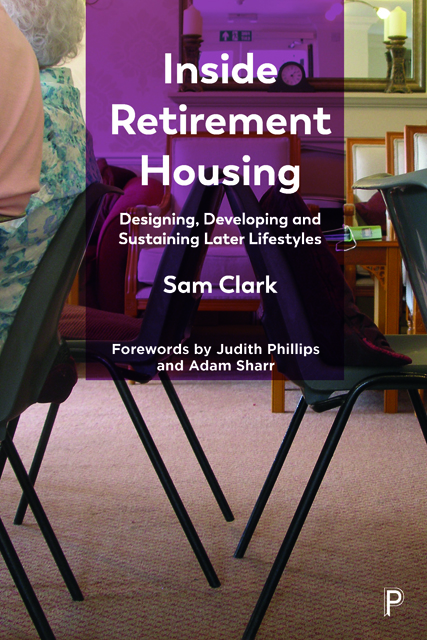2 - Specialist accommodation
Published online by Cambridge University Press: 20 June 2023
Summary
The previous chapter referred to recent public consciousness around societal ageing in the UK, specifically the housing needs and aspirations of older people. Of course the challenge of accommodating older persons is not new; historical accounts indicate special provisions being made during medieval times. One could reference acts of charity or ‘the giving of alms’, going back to the Apostolic Age. However, these were not targeted provisions. Good intentions were generally directed towards ‘the less fortunate’, with no active discrimination by age. Many of the older members of society would have been among the general ‘poor’, receiving alms from religious houses, if not supported by their family members. This chapter, therefore, explores the evolution of specialist accommodation for older people.
Monastic orders were perhaps the earliest communities to make special provision by way of dedicated accommodation for their elders. According to Howson (1993), monks would care for their aged and infirm brothers in the ‘farmery’, from which the name ‘infirmary’ is derived. The farmery was one of the extra-claustral buildings in the outer court of a monastery, usually on the quiet side of the precinct away from the hustle and bustle of public life. In its simplest form the farmery would be an oblong, aisle-less hall, similar in plan to a modern hospital pavilion, with a chapel projecting eastward from the end or side according to the position of the hall. Beaulieu Abbey is a good example, albeit ruined walls are all that remains of the farmery. Elsewhere, if the hall was too wide for a single structural span it was furnished with aisles and a stone arcade like a church. Webb (1921) describes how monks were accommodated in beds positioned along the outside walls and served nourishing meals from a special kitchen. With the exception of travellers, monasteries did not cater for laymen and women. Howson (1993) states that the practice of providing alms on site, as board and lodging to local people, did not emerge until the 12th and 13th centuries.
Contemporary with these forms of monastic accommodation were socalled bedehouses, hospitals, maison dieus and almshouses.
- Type
- Chapter
- Information
- Inside Retirement HousingDesigning, Developing and Sustaining Later Lifestyles, pp. 21 - 28Publisher: Bristol University PressPrint publication year: 2022

